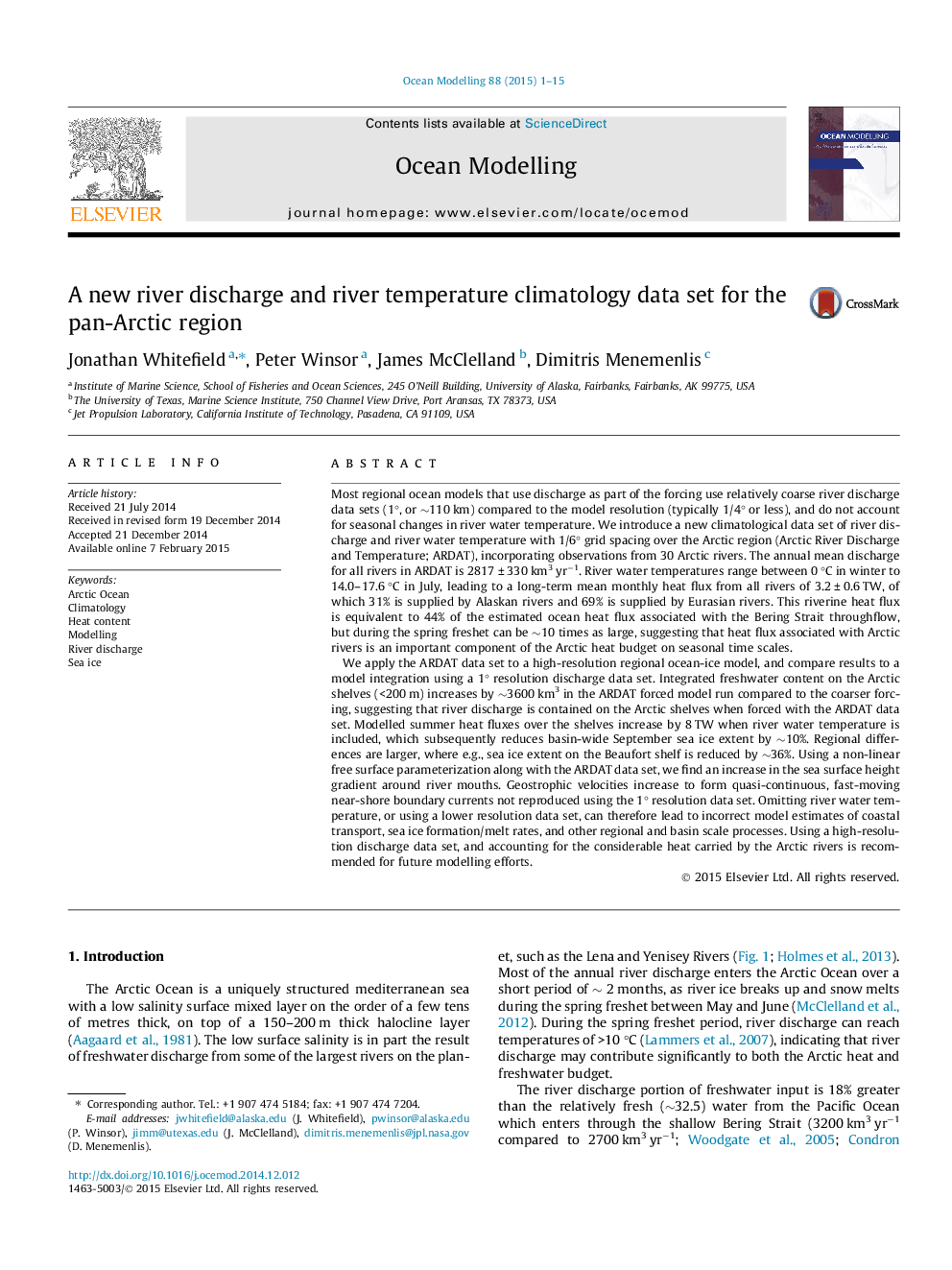| Article ID | Journal | Published Year | Pages | File Type |
|---|---|---|---|---|
| 6388148 | Ocean Modelling | 2015 | 15 Pages |
Abstract
We apply the ARDAT data set to a high-resolution regional ocean-ice model, and compare results to a model integration using a 1° resolution discharge data set. Integrated freshwater content on the Arctic shelves (<200 m) increases by â¼3600 km3 in the ARDAT forced model run compared to the coarser forcing, suggesting that river discharge is contained on the Arctic shelves when forced with the ARDAT data set. Modelled summer heat fluxes over the shelves increase by 8 TW when river water temperature is included, which subsequently reduces basin-wide September sea ice extent by â¼10%. Regional differences are larger, where e.g., sea ice extent on the Beaufort shelf is reduced by â¼36%. Using a non-linear free surface parameterization along with the ARDAT data set, we find an increase in the sea surface height gradient around river mouths. Geostrophic velocities increase to form quasi-continuous, fast-moving near-shore boundary currents not reproduced using the 1° resolution data set. Omitting river water temperature, or using a lower resolution data set, can therefore lead to incorrect model estimates of coastal transport, sea ice formation/melt rates, and other regional and basin scale processes. Using a high-resolution discharge data set, and accounting for the considerable heat carried by the Arctic rivers is recommended for future modelling efforts.
Related Topics
Physical Sciences and Engineering
Earth and Planetary Sciences
Atmospheric Science
Authors
Jonathan Whitefield, Peter Winsor, James McClelland, Dimitris Menemenlis,
